Day-Ahead Load Demand Forecasting in Urban Community Cluster Microgrids Using Machine Learning Methods
Abstract
:1. Introduction
- Cluster microgrids are proposed by interconnecting neighborhood microgrids.
- Linear regression (quadratic), support vector machine, long short-term memory, and artificial neural networks machine learning algorithms are implemented for day-ahead load demand forecasting in cluster microgrids.
- Levenberg–Marquardt optimization algorithm-based ANN model is proposed for effective load day-ahead load demand forecasting in the cluster microgrids.
2. Description of the Proposed Cluster Microgrids
Energy Management System (EMS)
3. Machine Learning Techniques
3.1. Linear Regression (Quadratic)
3.2. Support Vector Machine
3.3. Artificial Neural Networks (ANN)
3.3.1. Single Layer Feed Forward Network
3.3.2. Multi-Layer Feed Forward Network
- Select the input data, such as temperature, Diffuse Horizontal Irradiance (DHI), wind, and loads from selected locations;
- Select the number of hidden layers;
- Select proper active function for hidden and output layers.
4. Results’ Validation and Discussion
4.1. Day-Ahead Load Demand Forecasting Using Linear Regression, Support Vector Machine, and Artificial Neural Networks
4.2. Identification of Best Optimization Algorithm of Neural Networks for Effective Forecasting
4.2.1. Levenberg–Marquardt (LM) Algorithm
4.2.2. Bayesian Regulation (BR) Algorithm
4.2.3. Scaled Conjugate Gradient (SCG) Algorithm
5. Conclusions
- ▪
- All machine learning algorithms are compared in terms of performance by computing several factors, such as root mean square error (RMSE), mean square error (MSE), mean absolute error (MAE), and calculation time.
- −
- Based on the findings, it was identified that artificial neural networks are the best forecasting technique for day-ahead load demand forecasting. It outperforms SVM and LR in terms of RMSE (426.04), MAPE (0.79), MSE (1.815 × 105), and MAE (131.72), although the computation is high.
- ▪
- Further, the ANN has also been evaluated using various optimization techniques, including Levenberg–Marquardt, Bayesian Regularization, and Scaled Conjugate Gradient algorithms, in order to determine the optimum algorithm for training ANN.
- −
- According to the findings, the Levenberg–Marquardt algorithm produces good results in terms of training, testing, validation, and error analysis.
Author Contributions
Funding
Institutional Review Board Statement
Informed Consent Statement
Data Availability Statement
Acknowledgments
Conflicts of Interest
Appendix A
| Parameter | Value |
|---|---|
| Maximum Epochs | 200 |
| Hidden Units | 100 |
| Gradient Threshold | 1 |
| Initial Learn rate | 0.005 |
| Learn rate Droop period | 125 |
| Learn rate Droop factor | 0.2 |
| No. of Records | 120 |
| Samples considered for training | 96 (80%) |
| Samples considered for testing | 24 (20%) |
References
- Saeed, M.H.; Fangzong, W.; Kalwar, B.A.; Iqbal, S. A Review on Microgrids’ Challenges & Perspectives. IEEE Access 2021, 9, 166502–166517. [Google Scholar] [CrossRef]
- Jacob, M.; Neves, C.; Vukadinović Greetham, D. Short Term Load Forecasting. In Forecasting and Assessing Risk of Individual Electricity Peaks. Mathematics of Planet Earth; Springer: Berlin/Heidelberg, Germany, 2020. [Google Scholar] [CrossRef] [Green Version]
- Ma, J.; Ma, X. A review of forecasting algorithms and energy management strategies for microgrids. Syst. Sci. Control. Eng. Tailor Fr. 2018, 6, 237–248. [Google Scholar] [CrossRef]
- Hossain, M.S.; Mahmood, H. Short-Term Photovoltaic Power Forecasting Using an LSTM Neural Network and Synthetic Weather Forecast. IEEE Access 2020, 8, 172524–172533. [Google Scholar] [CrossRef]
- Chafi, Z.S.; Afrakhte, H. Short-Term Load Forecasting Using Neural Network and Particle Swarm Optimization (PSO) Algorithm. Math. Probl. Eng. 2021, 2021, 5598267. [Google Scholar] [CrossRef]
- Arvanitidis, A.I.; Bargiotas, D.; Daskalopulu, A.; Laitsos, V.M.; Tsoukalas, L.H. Enhanced Short-Term Load Forecasting Using Artificial Neural Networks. Energies 2021, 14, 7788. [Google Scholar] [CrossRef]
- Singh, S.; Hussain, S.; Bazaz, M.A. Short term load forecasting using artificial neural network. In Proceedings of the 2017 Fourth International Conference on Image Information Processing (ICIIP), Shimla, India, 21–23 December 2017; pp. 1–5. [Google Scholar] [CrossRef]
- Buitrago, J.; Asfour, S. Short-term forecasting of electric loads using nonlinear autoregressive artificial neural networks with exogenous vector inputs. Energies 2017, 10, 40. [Google Scholar] [CrossRef] [Green Version]
- Rafi, S.H.; Masood, N.A.; Deeba, S.R.; Hossain, E. A Short-Term Load Forecasting Method Using Integrated CNN and LSTM Network. IEEE Access 2021, 9, 32436–32448. [Google Scholar] [CrossRef]
- Izzatillaev, J.; Yusupov, Z. Short-term Load Forecasting in Grid-connected Microgrid. In Proceedings of the 2019 7th International Istanbul Smart Grids and Cities Congress and Fair (ICSG), Istanbul, Turkey, 25–26 April 2019; pp. 71–75. [Google Scholar] [CrossRef]
- Zhang, A.; Zhang, P.; Feng, Y. Short-term load forecasting for microgrids based on DA-SVM. COMPEL-Int. J. Comput. Math. Electr. Electron. Eng. 2019, 38, 68–80. [Google Scholar] [CrossRef]
- Semero, Y.K.; Zhang, J.; Zheng, D. EMD–PSO–ANFIS-based hybrid approach for short-term load forecasting in microgrids. IET Gener. Transm. Distrib. 2020, 14, 470–475. [Google Scholar] [CrossRef]
- Semero, Y.K.; Zhang, J.; Zheng, D.; Wei, D. An Accurate Very Short-Term Electric Load Forecasting Model with Binary Genetic Algorithm Based Feature Selection for Microgrid Applications. Electr. Power Compon. Syst. 2018, 46, 1570–1579. [Google Scholar] [CrossRef]
- Cerne, G.; Dovzan, D.; Skrjanc, I. Short-Term Load Forecasting by Separating Daily Profiles and Using a Single Fuzzy Model Across the Entire Domain. IEEE Trans. Ind. Electron. 2018, 65, 7406–7415. [Google Scholar] [CrossRef]
- Jimenez, J.; Donado, K.; Quintero, C.G. A Methodology for Short-Term Load Forecasting. IEEE Lat. Am. Trans. 2017, 15, 400–407. [Google Scholar] [CrossRef]
- Guo, W.; Che, L.; Shahidehpour, M.; Wan, X. Machine-Learning based methods in short-term load forecasting. Electr. J. 2021, 34, 106884. [Google Scholar] [CrossRef]
- Groß, A.; Lenders, A.; Schwenker, F.; Braun, D.A.; Fischer, D. Comparison of short-term electrical load forecasting methods for different building types. Energy Inform. 2021, 4, 1–16. [Google Scholar] [CrossRef]
- Zhang, R.; Zhang, C.; Yu, M. A Similar Day Based Short Term Load Forecasting Method Using Wavelet Transform and LSTM. IEEJ Trans. Electr. Electron. Eng. 2022, 17, 506–513. [Google Scholar] [CrossRef]
- Wang, R.; Chen, S.; Lu, J. Electric short-term load forecast integrated method based on time-segment and improved MDSC-BP. Syst. Sci. Control. Eng. 2021, 9 (Suppl. S1), 80–86. [Google Scholar] [CrossRef]
- Hafeez, G.; Javaid, N.; Riaz, M.; Ali, A.; Umar, K.; Iqbal, Z. Day Ahead Electric Load Forecasting by an Intelligent Hybrid Model Based on Deep Learning for Smart Grid. In Advances in Intelligent Systems and Computing; Springer: Berlin/Heidelberg, Germany, 2019; Volume 993. [Google Scholar] [CrossRef]
- Kuster, C.; Rezgui, Y.; Mourshed, M. Electrical load forecasting models: A critical systematic review. In Sustainable Cities and Society; Elsevier: Amsterdam, The Netherlands, 2017; Volume 35, pp. 257–270. [Google Scholar] [CrossRef]
- Zheng, X.; Ran, X.; Cai, M. Short-Term Load Forecasting of Power System based on Neural Network Intelligent Algorithm. IEEE Access 2020. [Google Scholar] [CrossRef]
- Moradzadeh, A.; Zakeri, S.; Shoaran, M.; Mohammadi-Ivatloo, B.; Mohammadi, F. Short-Term Load Forecasting of Microgrid via Hybrid Support Vector Regression and Long Short-Term Memory Algorithms. Sustainability 2020, 12, 7076. [Google Scholar] [CrossRef]
- El Khantach, A.; Hamlich, M.; Belbounaguia, N.E. Short-term load forecasting using machine learning and periodicity decomposition. AIMS Energy 2019, 7, 382–394. [Google Scholar] [CrossRef]
- Alquthami, T.; Zulfiqar, M.; Kamran, M.; Milyani, A.H.; Rasheed, M.B. A Performance Comparison of Machine Learning Algorithms for Load Forecasting in Smart Grid. IEEE Access 2022, 10, 48419–48433. [Google Scholar] [CrossRef]
- Bashir, T.; Haoyong, C.; Tahir, M.F.; Liqiang, Z. Short term electricity load forecasting using hybrid prophet-LSTM model optimized by BPNN. Energy Rep. 2022, 8, 1678–1686. [Google Scholar] [CrossRef]
- Ribeiro, A.M.N.C.; do Carmo, P.R.X.; Endo, P.T.; Rosati, P.; Lynn, T. Short-and Very Short-Term Firm-Level Load Forecasting for Warehouses: A Comparison of Machine Learning and Deep Learning Models. Energies 2022, 15, 750. [Google Scholar] [CrossRef]
- Rao, S.N.V.B.; Padma, K. ANN based Day-Ahead Load Demand Forecasting for Energy Transactions at Urban Community Level with Interoperable Green Microgrid Cluster. Int. J. Renew. Energy Res. 2021, 11, 147–157. [Google Scholar] [CrossRef]
- Rao, S.N.V.B.; Kumar, Y.V.P.; Pradeep, D.J.; Reddy, C.P.; Flah, A.; Kraiem, H.; Al-Asad, J.F. Power Quality Improvement in Renewable-Energy-Based Microgrid Clusters Using Fuzzy Space Vector PWM Controlled Inverter. Sustainability 2022, 14, 4663. [Google Scholar] [CrossRef]
- Scott, D.; Simpson, T.; Dervilis, N.; Rogers, T.; Worden, K. Machine Learning for Energy Load Forecasting. J. Phys. IOP Publ. 2018, 1106, 012005. [Google Scholar] [CrossRef]
- Hong, W.-C. Electric load forecasting by support vector model. Appl. Math. Model. 2009, 33, 2444–2454. [Google Scholar] [CrossRef]
- Hu, Z.; Bao, Y.; Xiong, T. Electricity Load Forecasting Using Support Vector Regression with Memetic Algorithms. Sci. World J. 2013, 2013, 292575. [Google Scholar] [CrossRef] [PubMed]
- Sandeep Rao, K.; Siva Praneeth, V.N.; Pavan Kumar, Y.V.; John Pradeep, D. Investigation on various training algorithms for robust ANN-PID controller design. Int. J. Sci. Technol. Res. 2020, 9, 5352–5360. Available online: https://www.ijstr.org/paper-references.php?ref=IJSTR-0220-30423 (accessed on 17 May 2022).
- Kamath, H.G.; Srinivasan, J. Validation of global irradiance derived from INSAT-3D over India. Int. J. Sol. Energy 2020, 202, 45–54. [Google Scholar] [CrossRef]
- Source: NASA/POWER CERES/MERRA2 Native Resolution Hourly Data. Available online: https://power.larc.nasa.gov (accessed on 17 May 2022).
- Shohan, M.J.A.; Faruque, M.O.; Foo, S.Y. Forecasting of Electric Load Using a Hybrid LSTM-Neural Prophet Model. Energies 2022, 15, 2158. [Google Scholar] [CrossRef]

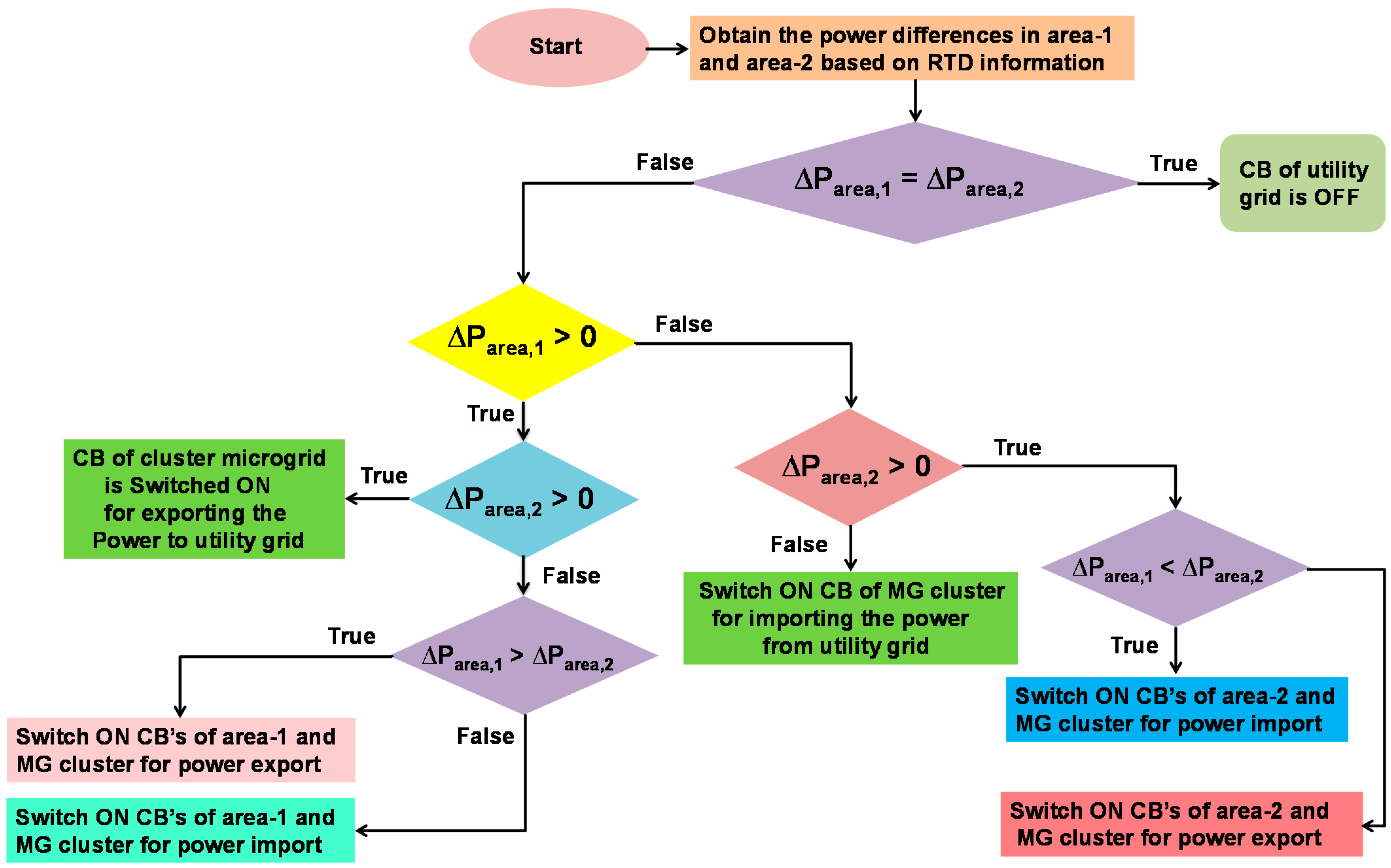
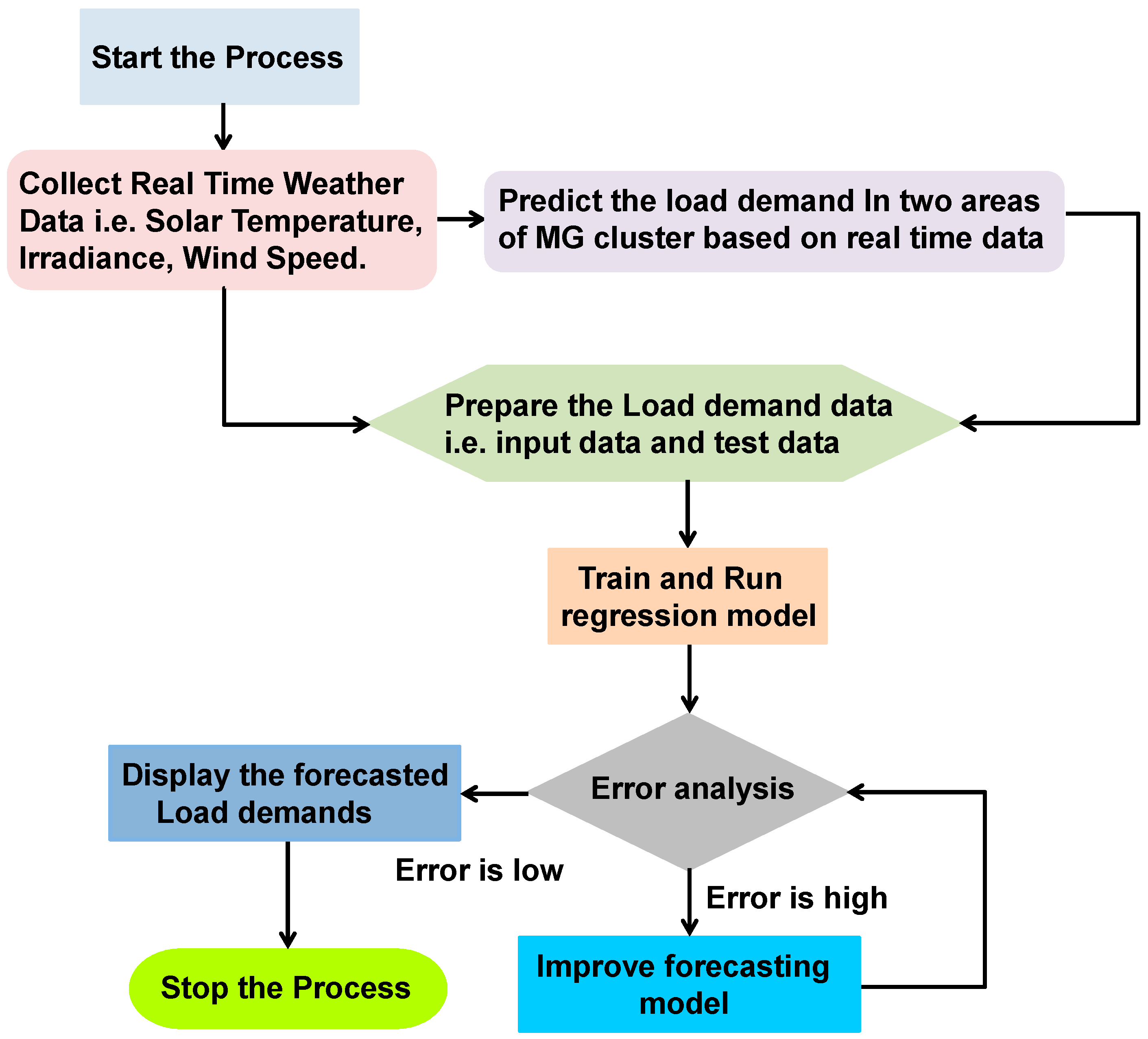
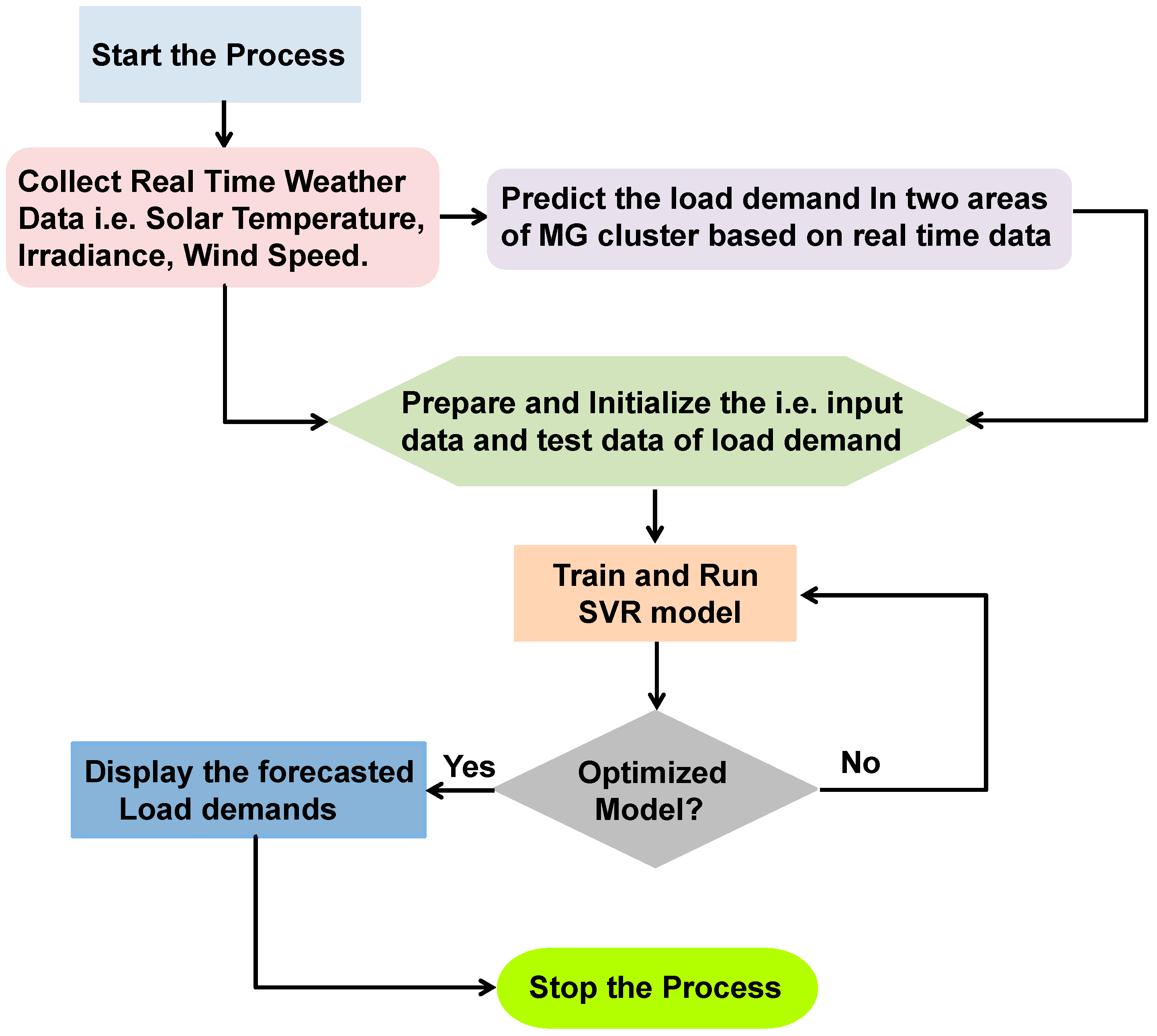
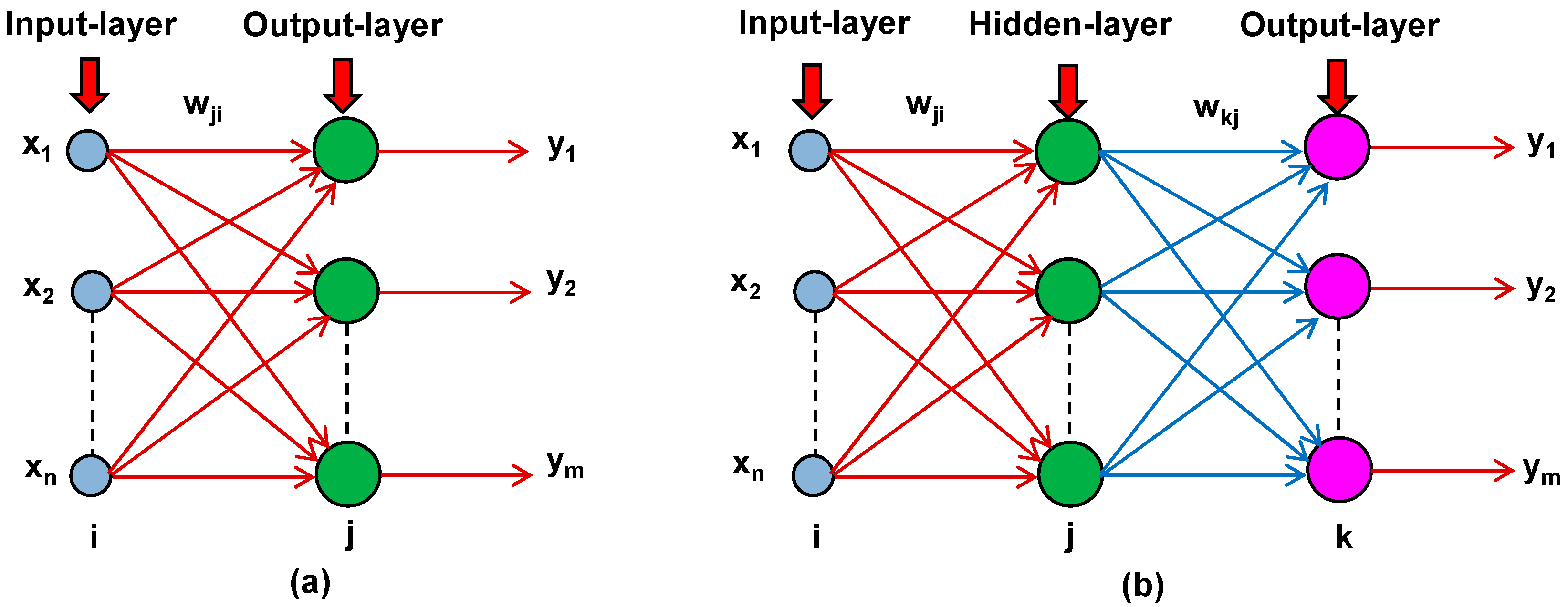
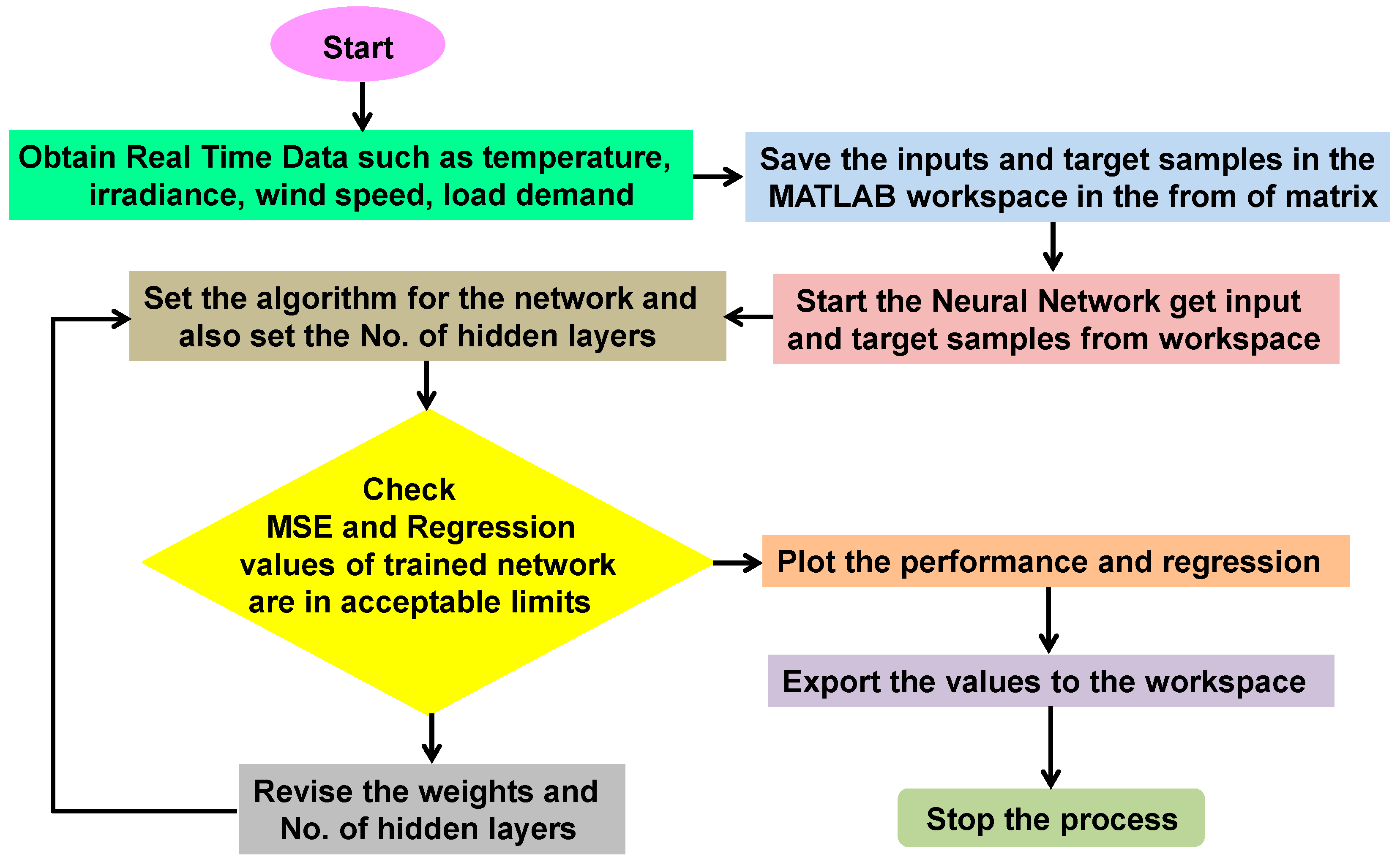
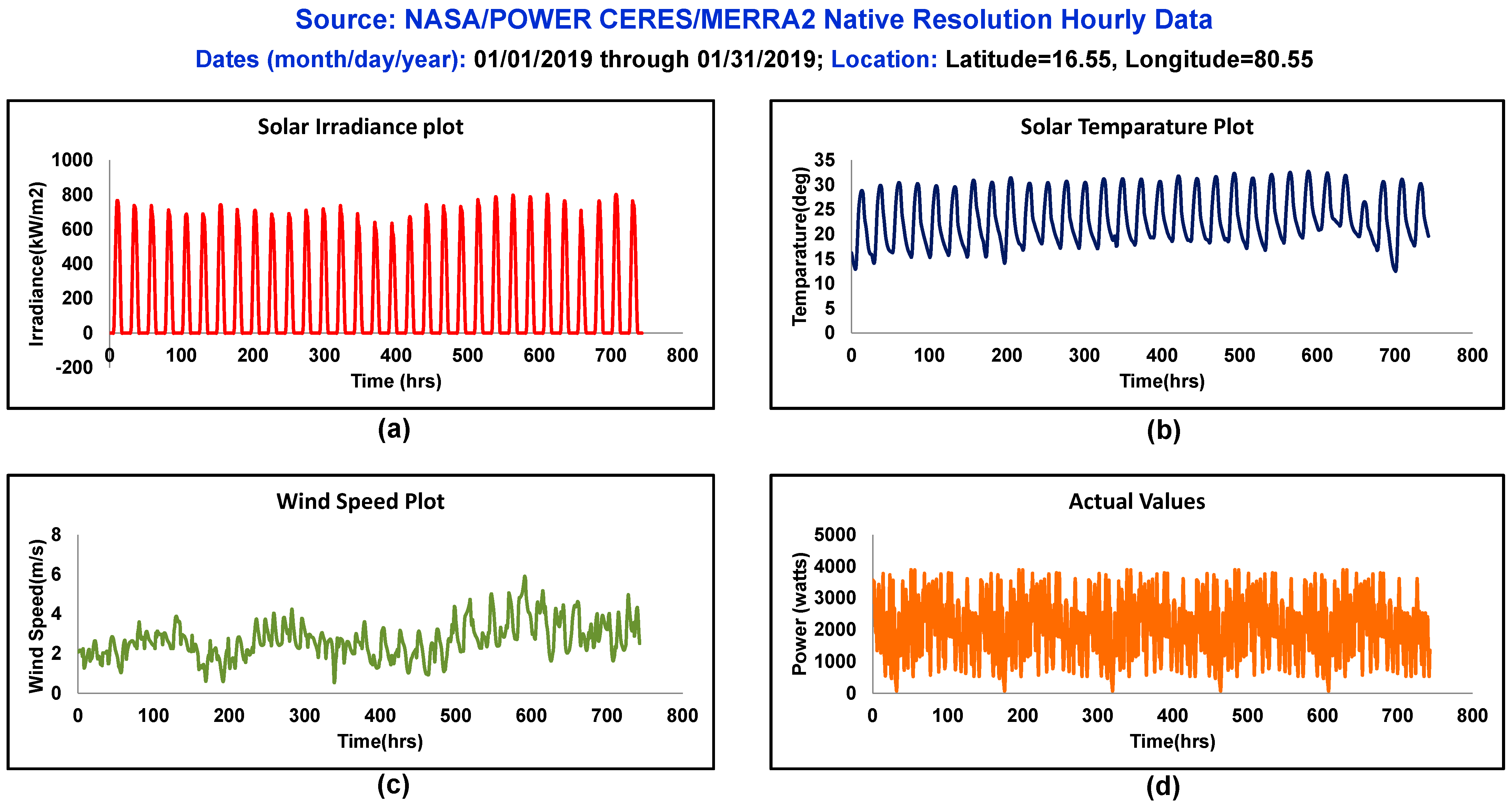

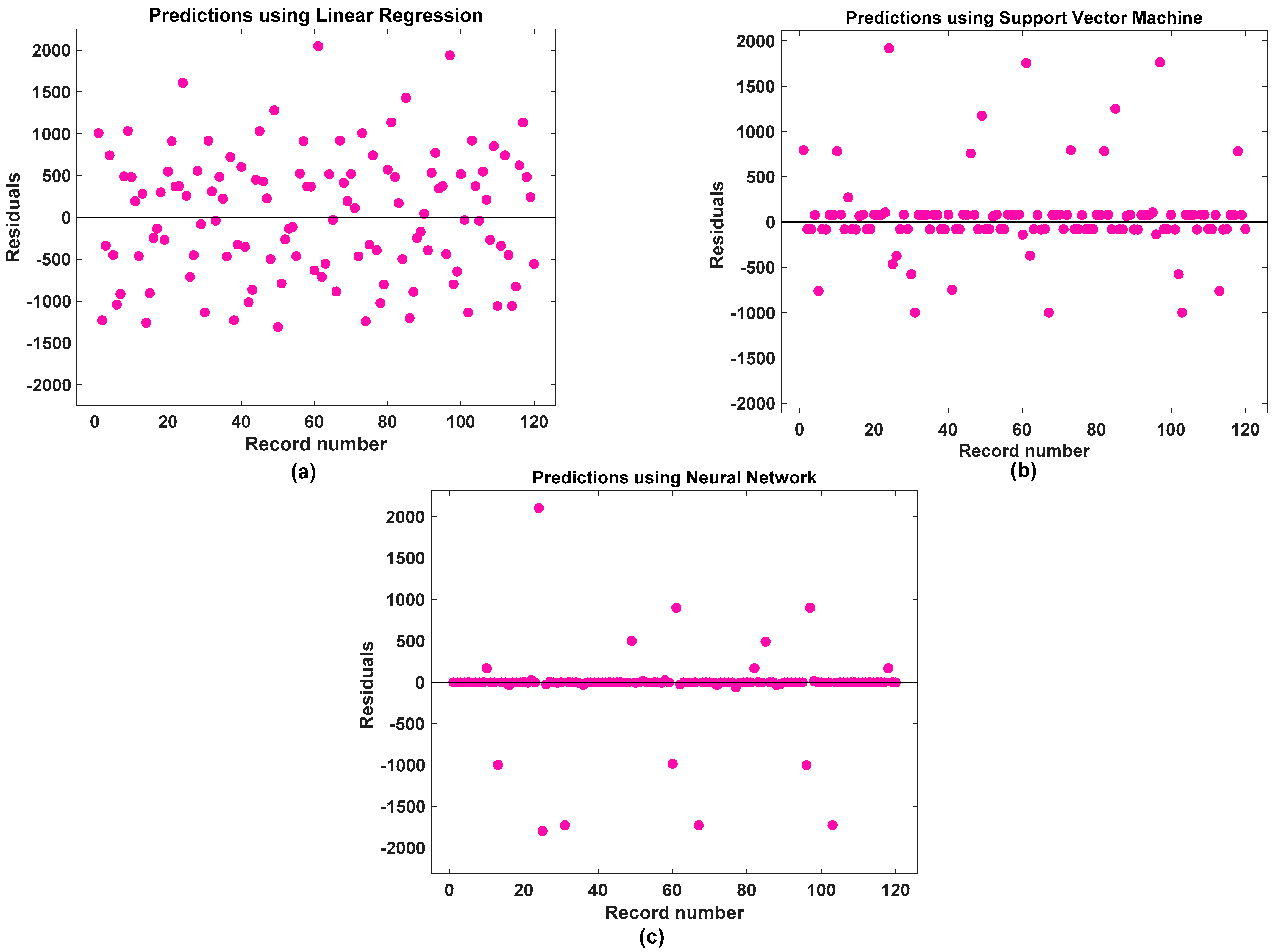
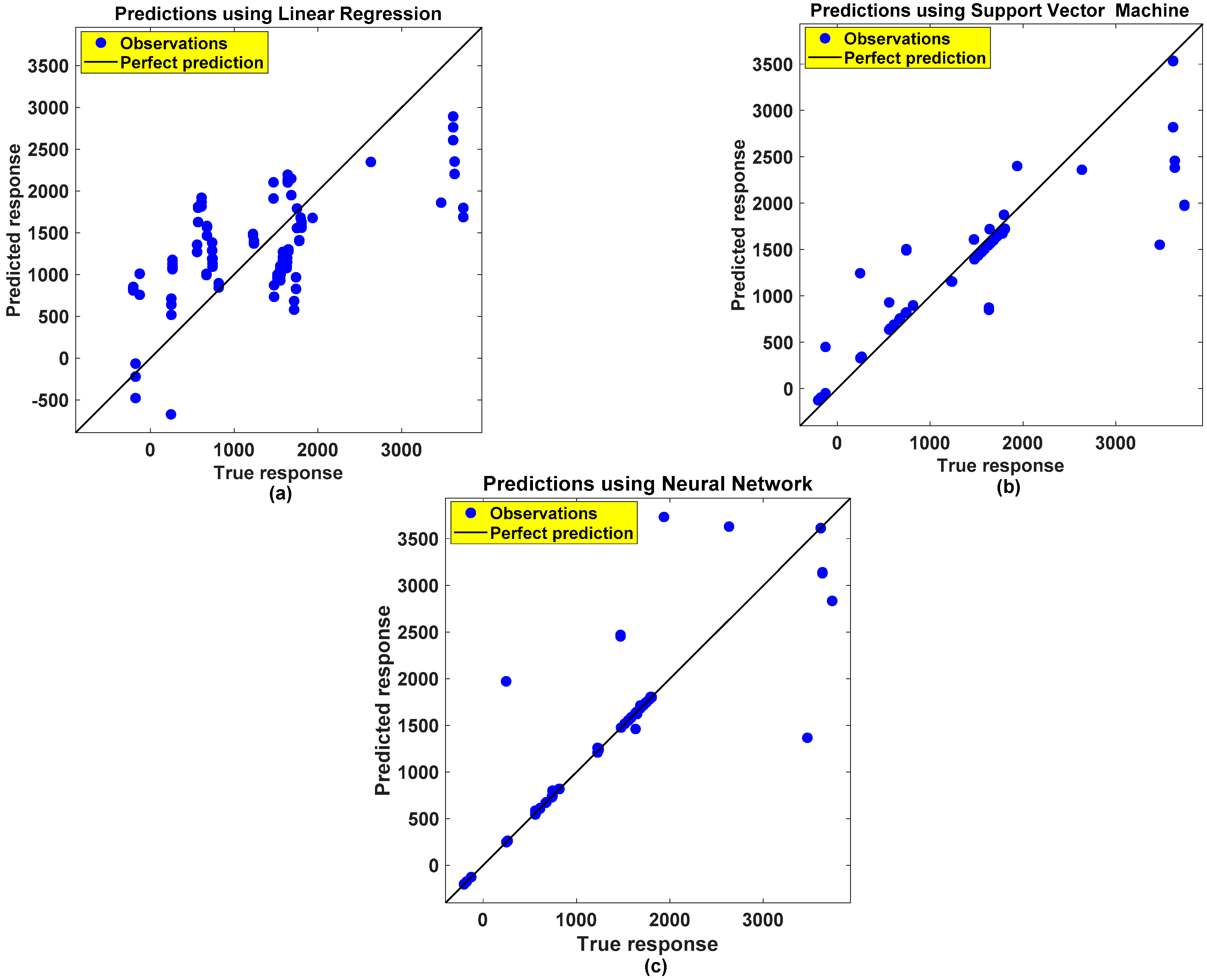
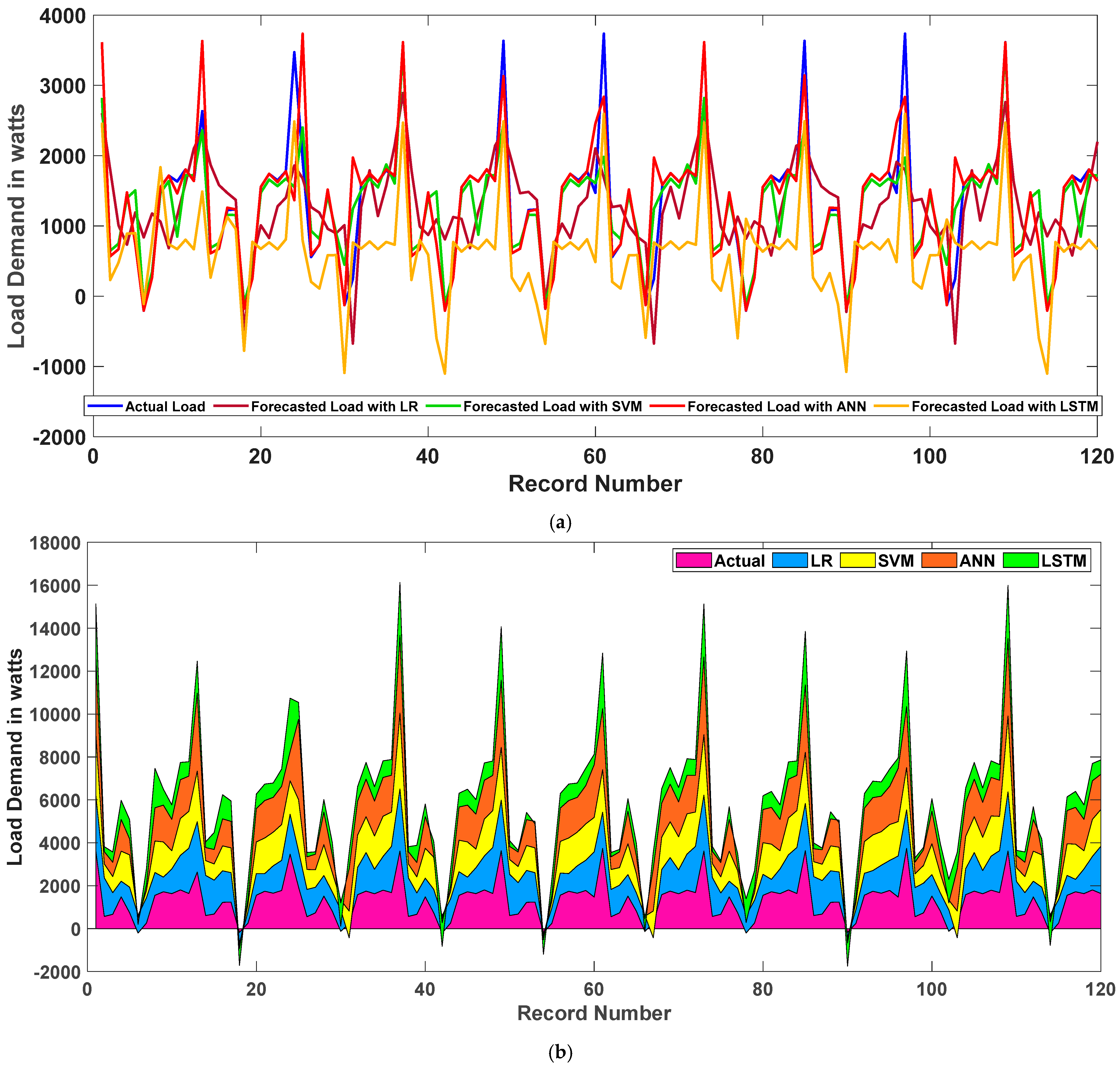
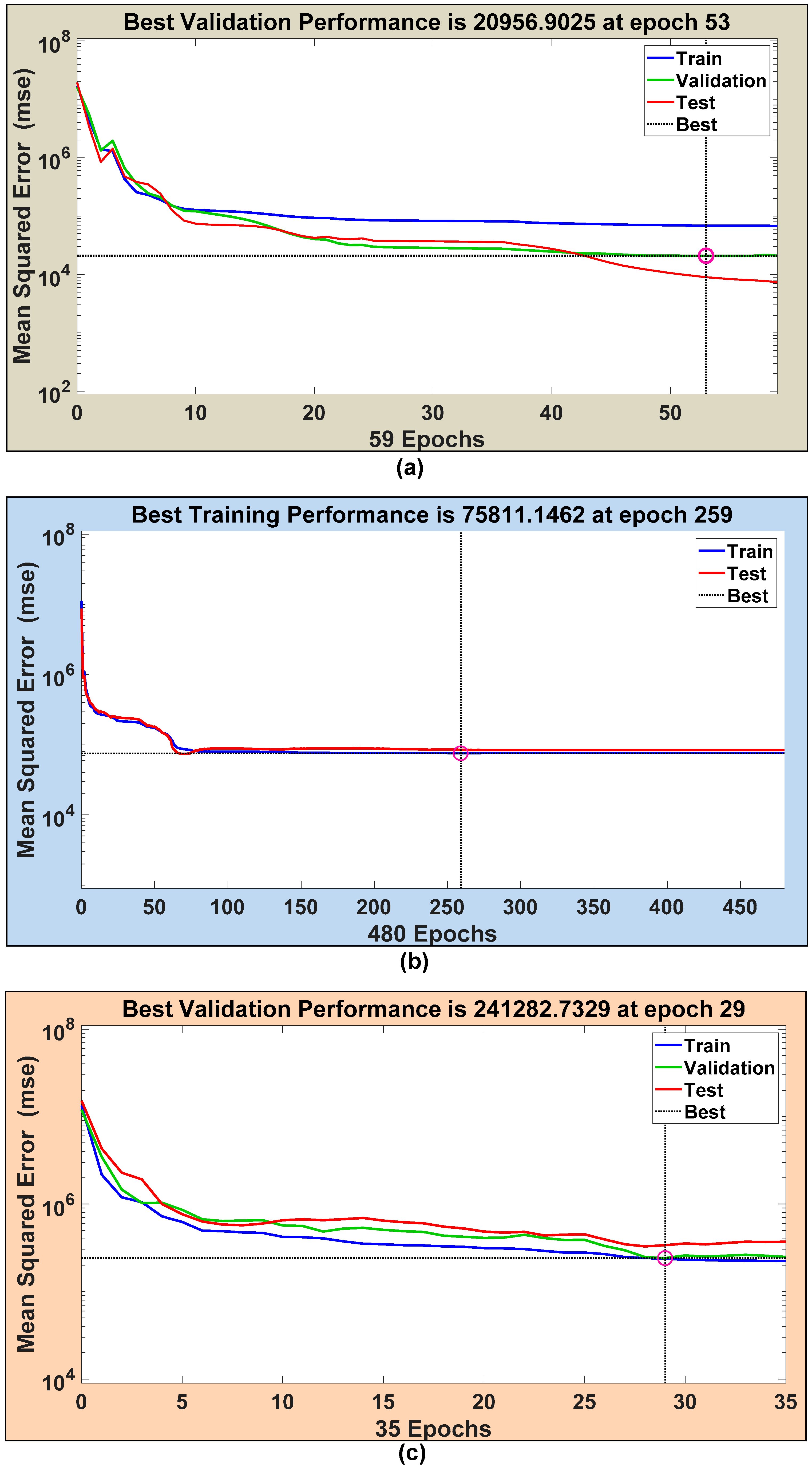
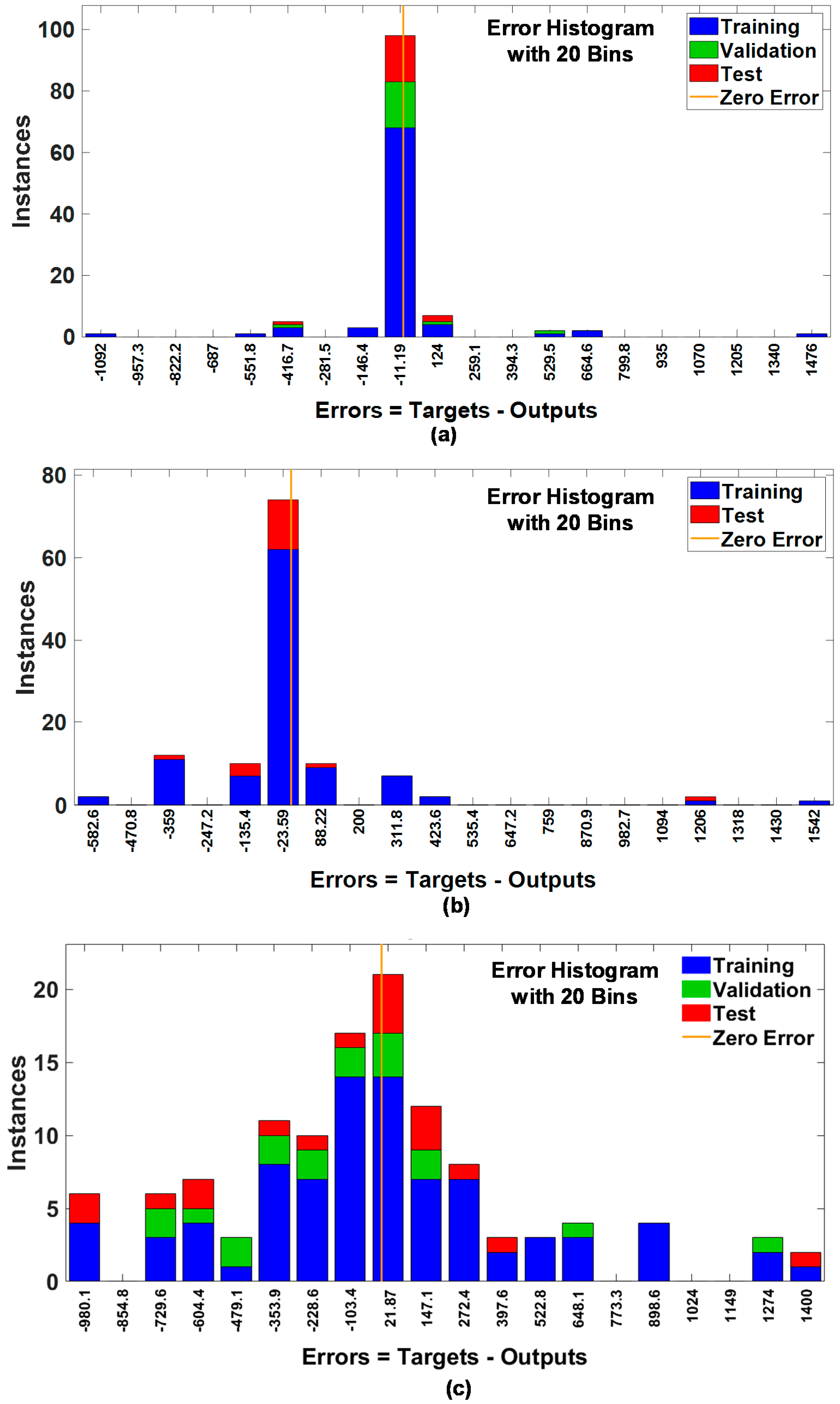
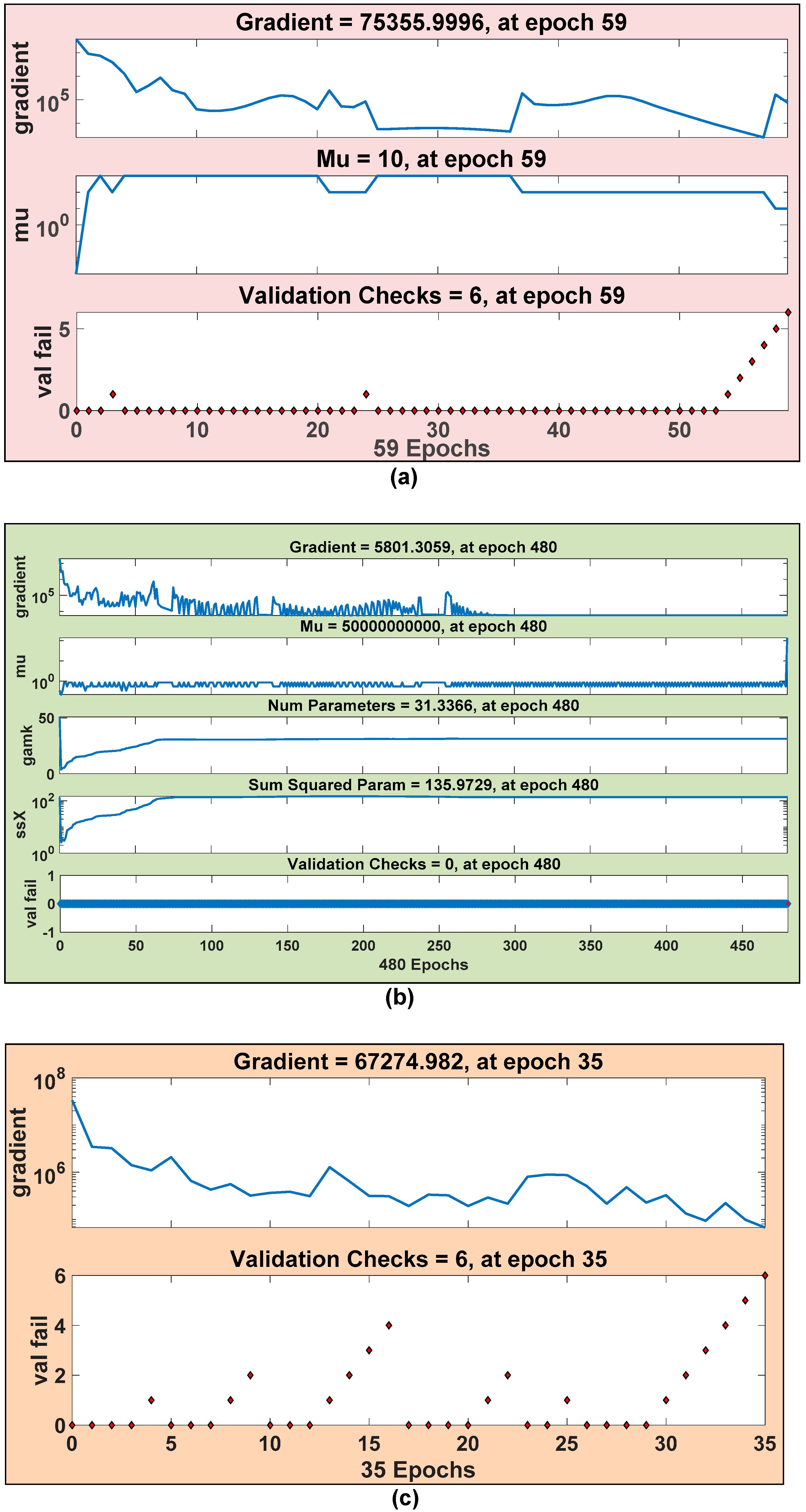
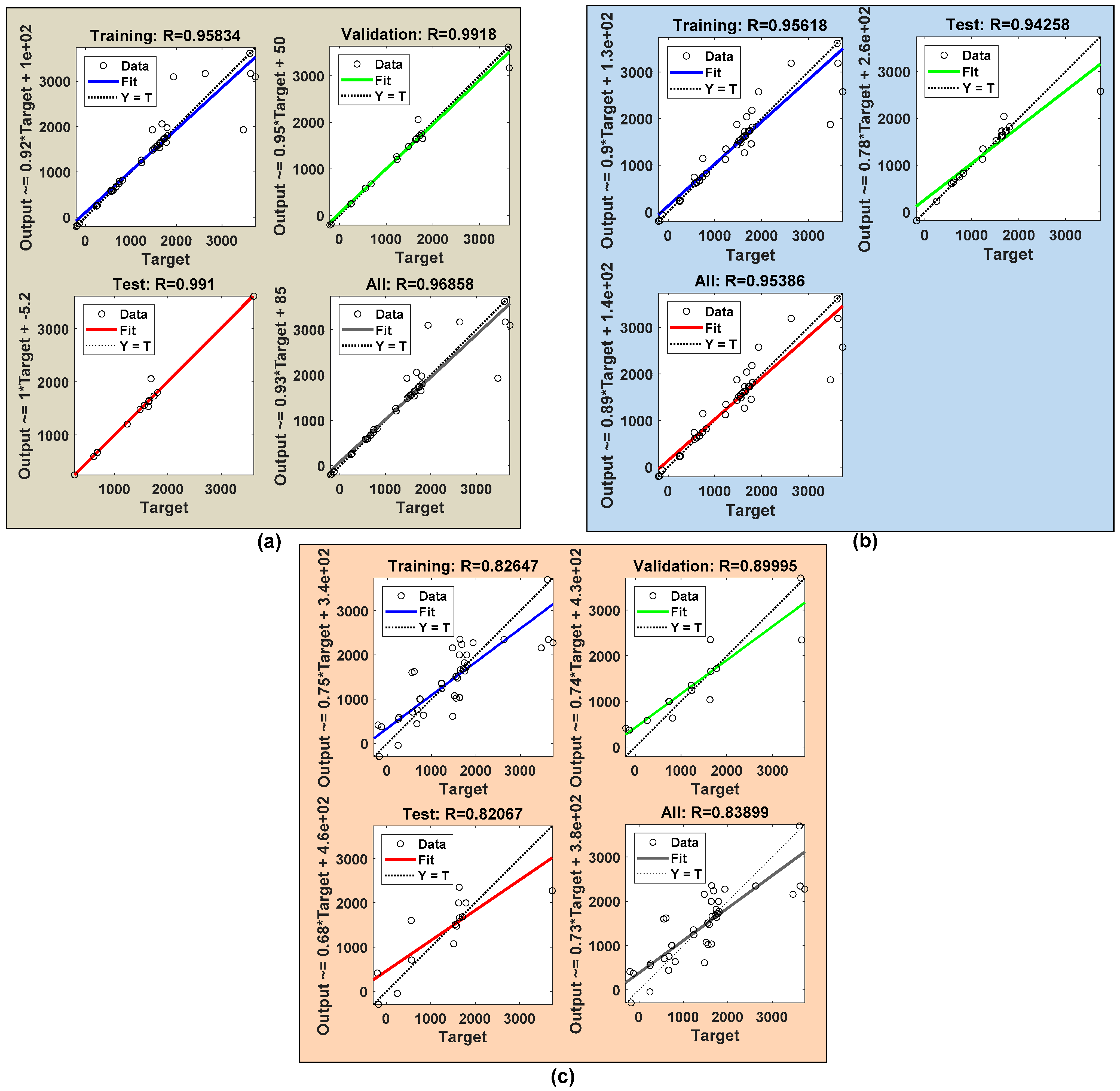
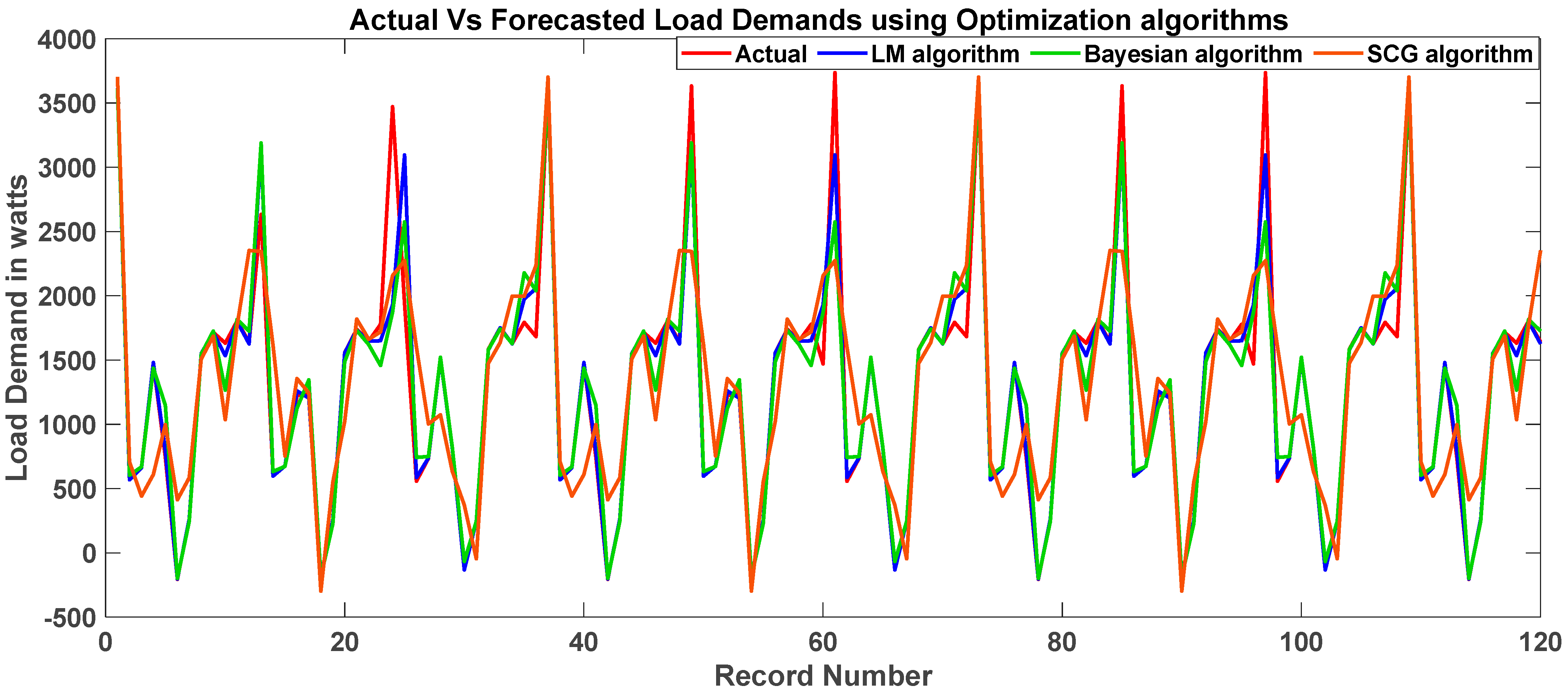
| Parameter | Typical Ratings | Units |
|---|---|---|
| Electric Charge | 1.6 × 10−19 | Coulomb |
| Boltzmann’s Constant | 1.3805 × 10−23 | Joule/Kelvin |
| Energy Gap | 1.11 | eV |
| Base power wind turbine | 1100 | VA |
| Rotor Efficiency | 0.45 | -- |
| Battery voltage | 90 | volt |
| Battery capacity | 7.5 | Ampere hour |
| Battery state of charge | 100% | -- |
| Battery response time | 50 | sec |
| Temperature of fuel cell stack | 342 | kelvin |
| Faradays Constant | 96,484,600 | -- |
| Gas Constant | 8314.656 | -- |
| EMF of fuel cell (No load) | 0.85 | volt |
| No. of Cells in fuel cell stack | 85 | -- |
| Utilization factor | 0.85 | -- |
| H2-O2 flow ratio | 1.268 | -- |
| Duty cycle of dc/dc converter | 0.74 | -- |
| Inductor value of dc/dc converter | 205 | μH |
| Capacitor value of dc/dc converter | 20 | μF |
| Initial voltage across capacitor | 220 | volts |
| Switching frequency | 75 | kHz |
| Cutoff frequency of LPF | 500 | Hz |
| Damping factor of LPF | 0.707 | -- |
| Length of transmission line | 10 | km |
| Power of a transformer | 300 | kVA |
| Frequency | 50 | Hz |
| Primary winding voltage (Line-Line) | 420 | volts |
| Resistance connected in primary winding | 0.016 | Ω |
| Secondary winding voltage (Line-Line) | 420 | volts |
| Resistance connected in secondary winding | 0.016 | Ω |
| Voltage of conventional grid | 11,000 | volts |
| Frequency of conventional grid | 50 | Hz |
| Source resistance of conventional grid | 0.8929 | Ω |
| Source Inductance of conventional grid | 16.58 | mH |
| Parameter | LR (Quadratic) [30] | SVM [25,31,32] | LSTM [36] | ANN (Proposed) |
|---|---|---|---|---|
| RMSE | 736.68 | 438.54 | 1456.3 | 426.04 |
| R-squared | 0.37 | 0.78 | 0.85 | 0.79 |
| MSE | 5.427 × 105 | 1.9232 × 105 | 2.1208 × 106 | 1.8151 × 105 |
| MAE | 621.19 | 235.97 | 182.94 | 131.72 |
| MAPE | 26.34% | 21.52% | 42.35% | 13.92% |
| Computation Time (s) | 1.8124 | 0.9999 | 25 | 2.829 |
| Name of the Algorithm | Training | Validation | Test | All | MSE |
|---|---|---|---|---|---|
| Levenberg–Marquardt | 0.95834 | 0.9918 | 0.991 | 0.96858 | 68,722 |
| Bayesian Regulation | 0.95618 | -- | 0.94258 | 0.95386 | 75,811 |
| Scaled Conjugated Gradient | 0.82647 | 0.89995 | 0.82067 | 0.83899 | 238,292 |
Publisher’s Note: MDPI stays neutral with regard to jurisdictional claims in published maps and institutional affiliations. |
© 2022 by the authors. Licensee MDPI, Basel, Switzerland. This article is an open access article distributed under the terms and conditions of the Creative Commons Attribution (CC BY) license (https://creativecommons.org/licenses/by/4.0/).
Share and Cite
Rao, S.N.V.B.; Yellapragada, V.P.K.; Padma, K.; Pradeep, D.J.; Reddy, C.P.; Amir, M.; Refaat, S.S. Day-Ahead Load Demand Forecasting in Urban Community Cluster Microgrids Using Machine Learning Methods. Energies 2022, 15, 6124. https://doi.org/10.3390/en15176124
Rao SNVB, Yellapragada VPK, Padma K, Pradeep DJ, Reddy CP, Amir M, Refaat SS. Day-Ahead Load Demand Forecasting in Urban Community Cluster Microgrids Using Machine Learning Methods. Energies. 2022; 15(17):6124. https://doi.org/10.3390/en15176124
Chicago/Turabian StyleRao, Sivakavi Naga Venkata Bramareswara, Venkata Pavan Kumar Yellapragada, Kottala Padma, Darsy John Pradeep, Challa Pradeep Reddy, Mohammad Amir, and Shady S. Refaat. 2022. "Day-Ahead Load Demand Forecasting in Urban Community Cluster Microgrids Using Machine Learning Methods" Energies 15, no. 17: 6124. https://doi.org/10.3390/en15176124
APA StyleRao, S. N. V. B., Yellapragada, V. P. K., Padma, K., Pradeep, D. J., Reddy, C. P., Amir, M., & Refaat, S. S. (2022). Day-Ahead Load Demand Forecasting in Urban Community Cluster Microgrids Using Machine Learning Methods. Energies, 15(17), 6124. https://doi.org/10.3390/en15176124












